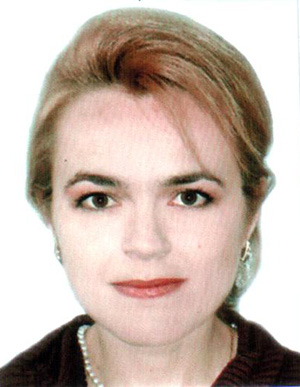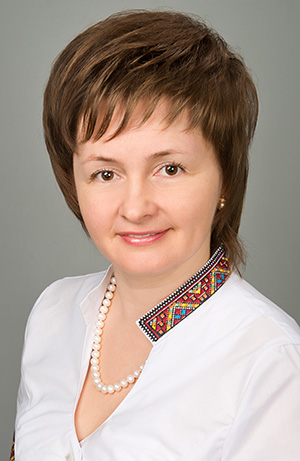|
  UDC 332:631.1
UDC 332:631.1
Butrym, O., & Drebot, O. (2017). Aspekty stratehiyi formuvannya vnutrishn'oho vuhletsevoho rynku pry vykorystanni sil's'kohospodars'kykh zemel' [Aspects of the strategy of forming the internal carbon market in the use of agricultural land]. In Sotsial'no-ekonomichni problemy suchasnoho periodu Ukrayiny [Socio-Economic Problems of the Modern Period of Ukraine]: Vol. 128 (6) (pp. 57-62). Retrieved from http://ird.gov.ua/sep/doi/sep2017.06.062. [in Ukrainian].
Sources: 18
Authors
Butrym Oksana VolodymyrivnaPh.D. of Economics, Senior Researcher
Head of Laboratory of the Laboratory of economy of low carbon development of agrosphere in the Department of institutional providing of nature management of the Institute of Agroecology and Environmental Management of National Academy of Agrarian Sciences of Ukraine

Drebot Oksana IvanivnaDoctor of Economics, Professor, Corresponding Member of the National Academy of Agrarian Sciences of Ukraine
Head of the Department of institutional support of nature use of the Institute of Agroecology and Environmental Management of National Academy of Agrarian Sciences of Ukraine
Contacts:  drebot_oksana@ukr.net drebot_oksana@ukr.net
Webpages:     
ResumeOn the basis of comparison of the dynamics of carbon stocks changes in a mineral soils pools on agricultural lands with indicators of economic activity in the agricultural sector of different countries, demonstrated that land use in Ukraine is not balanced. The necessity of reforming of organizational-economic relations between subjects of land use for introduction of low-carbon method is proved. The strategic directions of the formation of the internal carbon market (ICM) are substantiated, the basic principles and aspects of its functioning are described, which explains the performance and the importatnt reason of the proposed approach to preserving agro-resource potential. It is shown that the formation of the ICM is the way for increasing the agrofinished capitalization, the stimulus of livestock development and the source of financial revenues.
Keywords:internal carbon market, land-use sector, agricultural land, pool of mineral soils, low carbon development
References- Stratehiya nyzʹkovuhletsevoho rozvytku Ukrayiny do 2050 roku [The Strategy of Ukraine's Low Carbon Development till 2050] (2017, Nov 03). Prepared with the technical support of the United States Agency for International Development project "Municipal Energy Reform in Ukraine". Website of the Ministry of Ecology and Natural Resources of Ukraine. Retrieved from https://menr.gov.ua/news/31815.html [in Ukrainian].
- Cabinet of Ministers of Ukraine (2016). Pro skhvalennya Kontseptsiyi realizatsiyi derzhavnoyi polityky u sferi zminy klimatu na period do 2030 roku [On Approval of the Concept for the Implementation of the State Policy in the Field of Climate Change for the period up to 2030]. Resolution on 2016, Dec 07, 932-p. Retrieved from http://www.kmu.gov.ua/control/uk/cardnpd?docid= 249573705 [in Ukrainian].
- Cabinet of Ministers of Ukraine (2015). Pro skhvalennya Kontseptsiyi Derzhavnoyi tsilʹovoyi prohramy rozvytku ahrarnoho sektoru ekonomiky na period do 2020 roku [On Approval of the Concept of the State Target Program for the Development of the Agricultural Sector for the period up to 2020]. Resolution on 2015, Dec 30, 1437-p. Retrieved from https://www.kmu.gov.ua/ua/npas/248907971 [in Ukrainian].
- Babmindra, D. I., Tretyak, A. M. (2003). Zemelʹni resursy Ukrayiny ta yikh vykorystannya [Land resources of Ukraine and their use]. Kyiv: CZRU. [in Ukrainian].
- Bystryakov, I. K., Novotorov, O. S., Nikolayenko, T. S., & et al. (2002). Deyaki instytutsionalʹni aspekty zemelʹnykh vidnosyn v Ukrayini: stan ta napryamky vdoskonalennya [Some Institutional Aspects of Land Relations in Ukraine: State and Directions of Improvement]. Kyiv: Council for the Study of Productive Forces of Ukraine of the National Academy of Sciences of Ukraine. [in Ukrainian].
- Sabluk, P. (2008). Stan i perspektyvy rozvytku ahropromyslovoho kompleksu Ukrayiny [Status and prospects of development of agroindustrial complex of Ukraine]. Ekonomika Ukrayiny – Economy of Ukraine, 12, 4-9. [in Ukrainian].
- Bohira, M. S. (2008). Zemlekorystuvannya v rynkovykh umovakh: ekoloho-ekonomichnyy aspect [Land use in market conditions: ecological and economic aspect]. Lviv: Lviv National Agrarian University. [in Ukrainian].
- Dobryak, D. S., Tykhonov, A. H., & Palamarchuk, L. V. (2004). Ekonomichnyy oborot zemli v Ukrayini: teoriya, metodolohiya i praktyka [Economic Turnover of Land in Ukraine: Theory, Methodology and Practice]. Kyiv: Harvest. [in Ukrainian].
- Martyn, A. H., & Yevsyukov, T. O. (2009). Stan zemelʹnykh vidnosyn yak strymuyuchyy faktor rozvytku produktyvnykh syl Ukrayiny [The state of land relations as a deterrent factor for the development of the productive forces of Ukraine]. Proceedings of the International Conference, Kyiv, 2009, Mar 10. Kyiv: Council for the Study of Productive Forces of Ukraine of the National Academy of Sciences of Ukraine, Part 3 (from 3), pp. 289-292. [in Ukrainian].
- Sokhnych, A. Ya. (2002). Problemy vykorystannya i okhorony zemelʹ v umovakh rynkovoyi ekonomiky [Problems of using and protecting of lands in a market economy]. Lviv: Ukrainian technologies. [in Ukrainian].
- Fedorov, M. M. (2007). Osoblyvosti formuvannya rynku zemelʹ silʹsʹkohospodarsʹkoho pryznachennya v Ukrayini [Features of the formation of the agricultural land market in Ukraine]. Ekonomika APK – The Economy of Agro-Industrial Complex, 5, 72-81. [in Ukrainian].
- Kitura, A. Ya. (2013). Instytutsiyne zabezpechennya funktsionuvannya rynku dozvoliv na vykydy parnykovykh haziv [Institutional support for functioning of the market for greenhouse gas emission permits]. (Ph.D. in Econ. Thesis, TNEU, Ternopil, Ukraine). [in Ukrainian].
- Bereznytska, M. V., & Karayeva, N. V. (2014). Formuvannya stratehichnykh napryamiv perekhodu do nyzʹkovuhletsevoho rozvytku Ukrayiny na osnovi ekspertnoyi otsinky [Formation of Strategic Directions of Transition to Low Carbon Development of Ukraine on the Basis of Expert Evaluation]. In Ekonomichnyy visnyk Natsionalʹnoho tekhnichnoho universytetu Ukrayiny «Kyyivsʹkyy politekhnichnyy instytut» [Economic Bulletin of the National Technical University of Ukraine "Kyiv Polytechnic Institute"]: Vol. 11 (pp. 39-46). [in Ukrainian].
- State Statistics Service of Ukraine (2016). Statystychnyy shchorichnyk Ukrayiny za 2015 rik [Statistical Yearbook of Ukraine for 2015]. Kyiv: August Trade. Retrieved from http://www.ukrstat.gov.ua/ [in Ukrainian].
- Boody, G., Vondracek, B., Andow, D. A., Krinke, M., Westra, J., Zimmerman, J., & Welle, P. (2005). Multifunctional Agriculture in the United States. BioScience, 55(1), 27-38.
- Scherr, S. J., Shames, S., & Friedman, R. (2013). Defining integrated landscape management for policy makers. Ecoagriculture Policy Focus, 10. Washington, DC: EcoAgriculture Partners.
- Roger, C., Cattaneo, A., & Johansson, R. (2008, May 1). Cost-effective design of agri-environmental payment programs: U.S. experience in theory and practice. Ecological Economics, 65 (4), 737-752.
- Jiang, Y., & Swallow, S. K. (2017). Impact Fees Coupled With Conservation Payments to Sustain Ecosystem Structure: A Conceptual and Numerical Application at the Urban-Rural Fringe. Ecological Economics, June, 136-147.
|